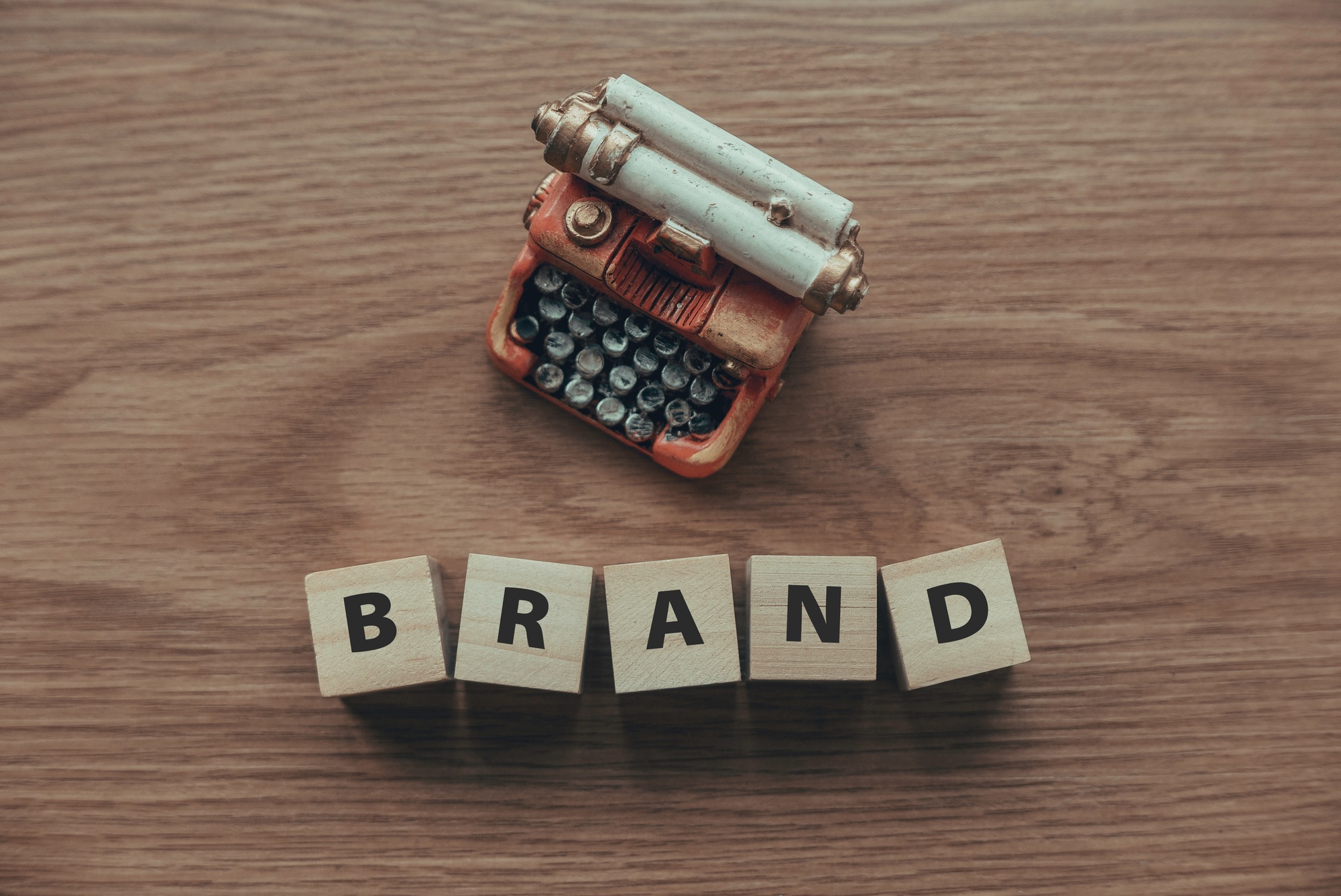Key Takeaways

- Importance of Font Selection: The right logo font is critical in shaping your brand identity and conveying positive first impressions to your customers.
- Types of Logo Fonts: Familiarize yourself with various types of logo fonts—serif, sans-serif, script, and display—to select one that aligns with your brand’s personality and values.
- Readability and Versatility: Choose a logo font that is readable across different media and versatile enough to adapt to various sizes and backgrounds.
- Successful Case Studies: Learn from well-known brands like Coca-Cola and Disney, which utilize custom fonts that reinforce their identity and emotional connection with customers.
- Trends and Predictions: Stay updated on emerging typography trends and be prepared for a shift towards maximalism, with diverse and expressive font designs gaining popularity in the coming years.
Choosing the right font for your logo can make or break your brand’s identity. It’s not just about aesthetics; the font you select communicates your brand’s personality and values. Whether you’re aiming for modern sophistication or playful charm, the right logo font sets the tone for how customers perceive your business.
In a world where first impressions matter, your logo font plays a crucial role in capturing attention and conveying your message. With countless options available, understanding the nuances of typography can help you make an informed choice that resonates with your target audience. Dive into the world of logo fonts and discover how they can elevate your brand’s presence and create lasting connections.
Understanding Logo Fonts

Selecting the right logo font plays a crucial role in brand perception and identity. Typography influences how your brand connects with your target audience, especially for small businesses aiming to establish a strong presence in the market.
Importance of Typography in Branding
Typography significantly shapes brand messaging. A well-chosen font communicates brand values, creating an instant impression. For small businesses, using the right font can enhance visual identity and reinforce marketing strategies. Consistency across all platforms builds recognition, while each font style evokes specific emotions, helping to align your brand’s image with customer expectations.
Types of Logo Fonts
Familiarity with various logo font types enhances your selection process. Consider these categories:
- Serif Fonts: These fonts have decorative strokes at the ends of letters. They convey a traditional and trustworthy feel, ideal for businesses aiming for a classic image.
- Sans-serif Fonts: Clean and modern, sans-serif fonts offer clarity and simplicity. They’re popular among tech and innovative brands.
- Script Fonts: These fonts mimic handwriting, adding a personal touch. They work well for businesses wanting to convey elegance or creativity.
- Display Fonts: Unique and bold, display fonts grab attention and communicate personality. Use them sparingly to ensure they don’t overwhelm your brand message.
Understanding these types allows you to choose a font that aligns with your brand identity, making marketing efforts more effective.
Popular Logo Fonts

Selecting the right logo font enhances your brand’s identity, making it crucial for small businesses aiming to establish a strong market presence. Below is a breakdown of popular logo font categories.
Serif Fonts
- Cormorant: Cormorant stands out with its classic elegance, inspired by traditional Garamond typefaces. It’s ideal for brands seeking to convey a premium or established feel. Its sophisticated design works well in luxury sectors, enhancing marketing efforts through visual authority.
Sans Serif Fonts
- Futura: Futura embodies simplicity and geometric design, making it perfect for modern brands. Its use by companies like Calvin Klein and Domino’s Pizza reflects its versatility. Futura facilitates recognition and memorability, essential for effective marketing.
- Gotham: Gotham’s clean lines and urban influence resonate with dynamic brands. Featured in Barack Obama’s 2008 campaign, it conveys strength and reliability. Its widespread use in logos for Spotify and GQ showcases its ability to connect with diverse audiences.
- Proxima Nova: Proxima Nova merges geometric and modern styles, appealing to web-focused businesses. This font’s seven weights and matching italics provide versatility, making it a go-to choice for your logo. The balance it strikes between professional and approachable enhances marketing strategies.
Script Fonts
- Brush Script: Brush Script exudes creativity and friendliness. This casual, handwritten style suits brands focusing on personal connection or artistic expression. Use this font in logos to communicate warmth, making your small business more relatable. It reinforces marketing by adding a unique, memorable touch.
By choosing the right font, you can elevate your brand’s image and effectively communicate your message to customers, particularly in competitive markets.
Factors to Consider When Choosing Logo Fonts

Choosing the right logo font involves several critical factors that influence how your brand is perceived. Focusing on these elements can significantly enhance your brand identity, especially for small businesses aiming to communicate effectively with their target audience.
Brand Personality
Aligning your logo font with your brand’s personality is crucial. The chosen font should echo your brand traits. For instance, a corporate brand benefits from a serif font, projecting trustworthiness and professionalism. In contrast, a modern and innovative brand might choose a sans-serif font, reflecting simplicity and a cutting-edge approach. Your font choice should resonate with your brand values, ensuring that it communicates the desired message clearly.
Readability and Versatility
Readability is vital for effective communication in marketing. Opt for a logo font that remains legible across various media, including digital and print formats. A versatile font adapts well to different sizes and backgrounds, maintaining visual integrity. Bold, clear fonts enhance recognition, making it easier for customers to remember your brand. Prioritize legibility when selecting your logo font to ensure your message reaches your audience without confusion.
Examples of Successful Logo Fonts

Choosing the right font for logos plays a crucial role in brand identity. Here are notable examples from well-known brands that exemplify effective logo font selection.
Case Studies of Well-Known Brands
- Coca-Cola: Uses a custom-designed script font known as “Spencerian Script.” This elegant font embodies the brand’s classic appeal, enhancing its recognition and legacy.
- Disney: Features a bespoke script font inspired by Walt Disney’s signature. This personalized touch adds uniqueness, resonating emotionally with fans and customers.
- Cartier: Employs a sophisticated script logo that aligns perfectly with its luxury jewelry and watch image, reinforcing brand elegance.
- Mercedes-Benz: Utilizes a custom serif font similar to Corporate A Light. This choice conveys sophistication, authority, and modernity that reflects the premium nature of the brand.
- Vogue: Adopts a Didone serif font, representing luxury and boldness while maintaining legibility, aligning well with its high-fashion identity.
- Baltica: Showcases a modern serif font with slightly rounded serifs. This font caters to businesses aiming for a refined brand image, making it suitable for various marketing strategies.
Lessons Learned from Their Choices
- Emotional Impact: Script fonts, like those used by Coca-Cola and Disney, create a warm connection, making your brand more relatable.
- Brand Alignment: Selecting fonts that match brand values enhances recognition. For example, Mercedes-Benz’s sophisticated serif aligns with its luxury positioning.
- Consistency Across Platforms: Effective logo fonts remain legible and recognizable across different media. Ensuring consistency strengthens your brand’s presence in the marketplace.
- Target Audience Connection: Understanding your audience helps in selecting fonts that evoke the right emotions, as seen in Cartier’s elegant script.
Using these successful case studies can guide small businesses in making informed choices about logo fonts, ultimately enhancing their marketing efforts and brand identity.
Trends in Logo Fonts
Understanding current trends in logo fonts is essential for creating a strong brand identity in a competitive marketplace. Here’s a look at emerging styles shaping typography today.
Current Trends in Typography
Maximalism is gaining traction, as many brands shift from ultra-minimalism to more expressive typography. This trend embraces variety, allowing for bold designs that capture attention. Small businesses can benefit from this approach by using diverse font styles and weights that stand out in marketing materials. Increased personality in typography can evoke emotions, making a brand more relatable and memorable.
Predictions for the Future
In 2025, expect to see distinct features in various font styles. Serif fonts may showcase sharp serifs, playful swooshes, and romantic quill-pen terminals, enhancing elegance. Sans-serif fonts might emphasize geometric designs, incorporating wider cuts for modern aesthetics. Minimal designs could also emerge, where tweaking individual letters adds character without sacrificing simplicity. Adapting to these trends can help your brand maintain relevance and connection with your target audience.
Conclusion
Choosing the right logo font is crucial for establishing a strong brand identity. It’s not just about aesthetics; it’s about communicating who you are and what you stand for. By understanding the different font categories and their emotional impacts, you can make informed decisions that resonate with your audience.
As you navigate current trends in typography, remember that your font choice should align with your brand’s personality. Whether you opt for a classic serif or a modern sans-serif, ensure it remains legible and versatile across all platforms. Your logo font can elevate your brand’s image and foster lasting connections with customers. Embrace the power of typography and watch your brand thrive in a competitive landscape.
Frequently Asked Questions
Why is selecting the right font important for a logo?
Choosing the right font for a logo is crucial because it shapes a brand’s identity and influences customer perception. Fonts communicate personality and values, making them essential for effective branding. A well-chosen font can enhance aesthetic appeal and create deeper connections with the target audience.
What are the main types of logo fonts?
The main types of logo fonts include serif, sans-serif, script, and display. Serif fonts convey tradition and trust, sans-serif fonts offer modernity and simplicity, script fonts evoke creativity and warmth, and display fonts often showcase uniqueness. Each type aligns with different brand identities.
How do I choose a font that matches my brand’s personality?
When selecting a font, consider your brand’s core values and target audience. For a corporate image, a serif font may project reliability, while a modern brand might benefit from a sans-serif font to reflect innovation. Ensure the font is legible and versatile across various media.
Can typography impact brand messaging?
Yes, typography significantly impacts brand messaging. The right font can evoke emotions, enhance visual identity, and establish brand recognition. For small businesses, thoughtful font choices can strengthen market presence and create a lasting impression on customers.
What makes a font readable across different media?
A readable font should be clear and easy to understand at various sizes and backgrounds. Look for fonts that maintain legibility, even when scaled down for mobile screens or printed in different formats. Versatile fonts typically adapt well across platforms and applications.
Can I take inspiration from famous logos?
Absolutely! Analyzing successful logo fonts from well-known brands can provide valuable insights. Look at how brands like Coca-Cola and Disney use unique fonts to express their identity. Such case studies can guide small businesses in selecting fonts that resonate with their audience.
What are the current trends in logo fonts?
Current trends in logo fonts include a shift towards maximalism, where brands embrace more expressive typography. This approach allows the use of diverse styles and weights to capture attention. Anticipate playful designs in serifs and geometric features in sans-serifs as trends evolve into 2025.
How can I ensure consistency in font choice across my branding?
To maintain consistency in your branding, select a primary font for your logo and complementary fonts for other materials. Ensure these fonts reflect your brand’s personality and are used consistently in marketing materials, websites, and social media for effective recognition.
Image Via Envato



